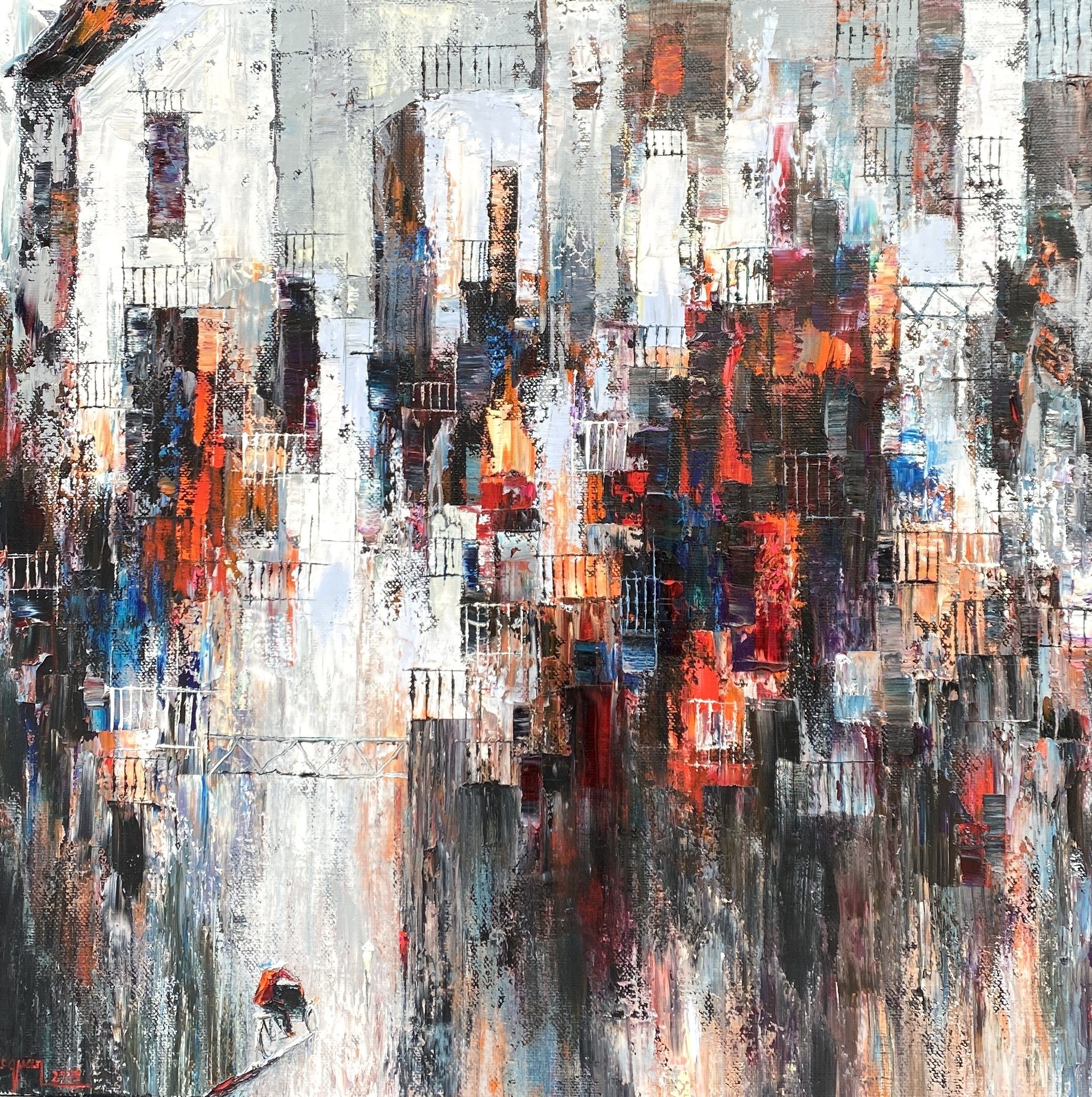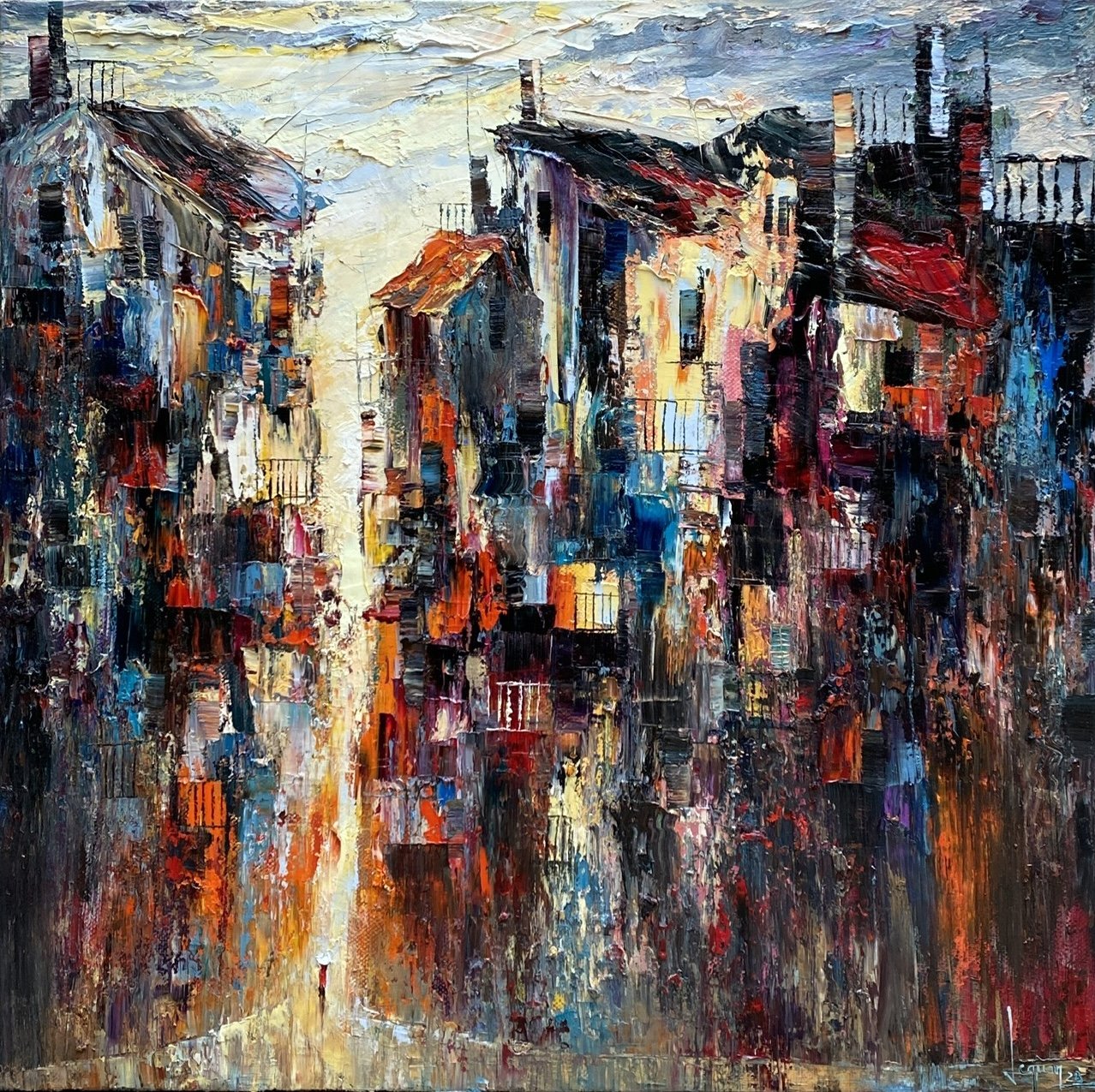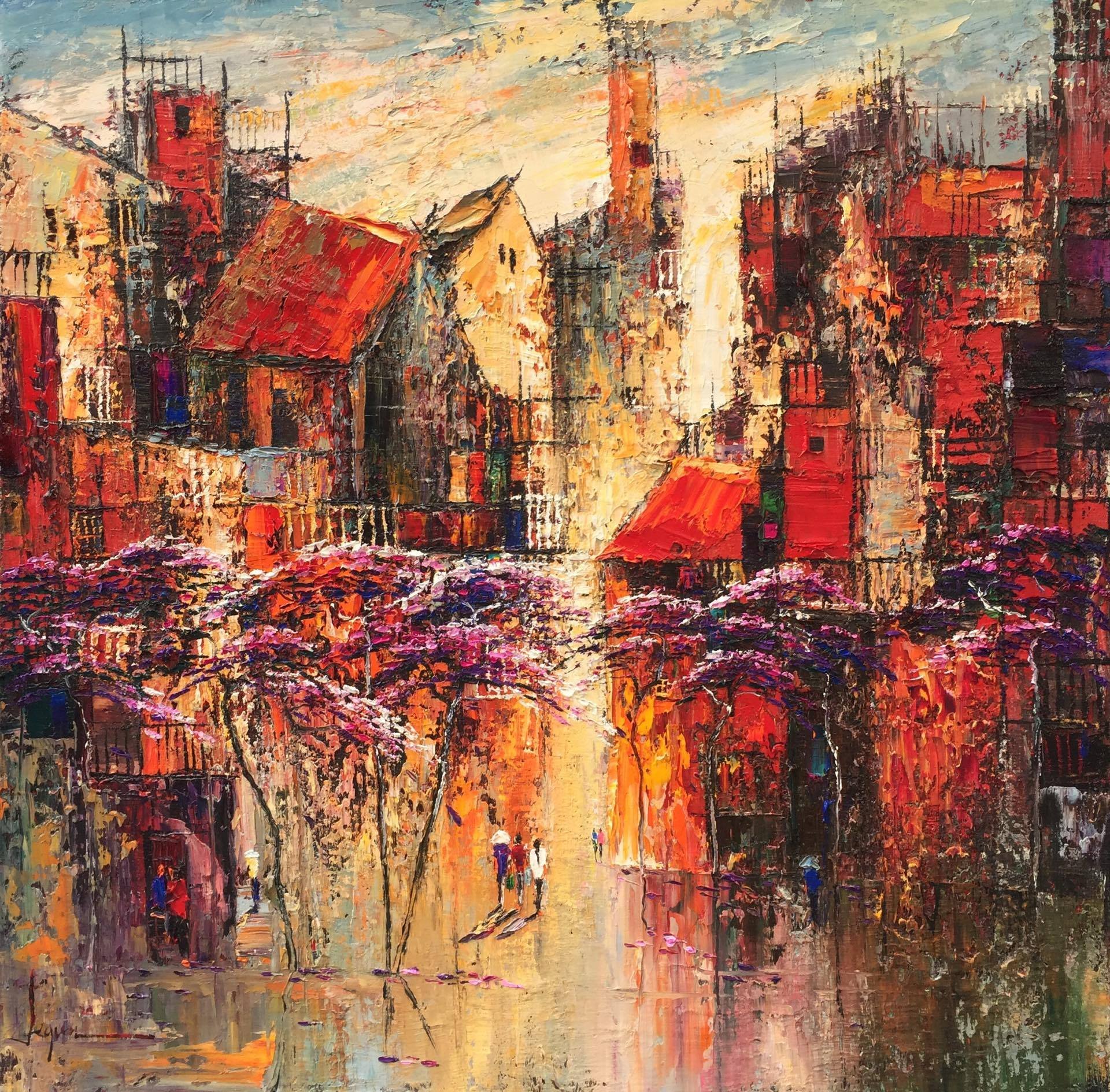
Le Quan
Biography
For nearly eighteen years of oil painting, Le Quan painted what his heart could feel, not what the eyes could see. Most of them are in Impressionist style, with a blend of Cubism, Expressionism, and semi-abstract contemporary, the themes of landscapes, architecture, and urban areas are simplified to a certain extent, leaving most of it for memory. For him, painting is when he digs up the chaotic and fragmented memories of his poor, rugged, and destitute childhood to bring the viewers to another joyful world, a neverland, a memory of the Season far away, the quarters of the Street flashing back, floating without boundaries, all reminding us to love those beautiful days.
From 2000 to 2018, Le Quan participated in many domestic and international exhibitions. He was a member of the Artist Club from 2001 to 2004. In 2013, he had a solo exhibition at Thang Long Gallery, in Hanoi. He also participated in a fundraising program to build a school organized by Vietnam Art Space in 2018. His works are in private national and international collections, mostly sold to private collectors from Germany, France, China, Hong Kong, Spain, Austria, America, Switzerland, Sweden, United Kingdom, Netherlands, Japan, Portugal, Singapore, and Vietnam.
Le Quan was born in 1977 in a suburban district of Hanoi, he graduated from Hanoi Central University of Art in 2002 and Hanoi University of Architecture in 2011. He is currently living and creating art in the capital city of Vietnam and also working as an interior designer.
1977: Born in Ha Noi province, live and work in Hanoi, Vietnam.
1999-2011: Hanoi University of Fine Arts, Hanoi, Vietnam
1999-2002: Central College of Music and Fine Arts, Hanoi, Vietnam
Hanoi University of Architecture, Hanoi, Vietnam
2006-2011: Hanoi University of Architecture, Hanoi, Vietnam
Exhibitions
2024: AAF Art Fair London Hampstead, Thang Long Art Gallery
2018: Exhibition of Heritage Area / Hoan Kiem Exhibition Center / Hanoi / Vietnam 2017: Group Exhibition of Rainbow / Trang Tien Exhibition Center / Hanoi / Vietnam
2013: Solo Exhibition, Thang Long Art Gallery, Hanoi
Interview (2021)
What is your personal journey from your childhood until now?
I was born into a poor family, next to Day River in Ung Hoa, Ha Tay district, a suburban area of Hanoi. In 1987, my family and I left the village for the new economic zone of Cuu Long tea farm in Hoa Binh province. My father died early in 1990 when I was just 13 years old, my mother had to raise my brothers and sisters on her own. Being the youngest child and the only one who has studied all the way to college, after school, I had to do manual jobs to earn money for school. I graduated from high school in 1998. In 1999, I went to the Central College of Arts Pedagogy. From then on I started to pursue art. I graduated from two universities in Hanoi in 2002 and 2011 by working for twelve years while studying at the same time. I started to pursue art professionally in 2012 until now. I love my mother, the miserable woman who raised me. Perhaps that is why in my painting, I always have the image of my mother, her back on me, a sad silence every morning I watch her go to work.
Since August 1999 I have been living in this city. I love it all, the living space, the dynamic pace of life, its prosperity in the making, the beauty of architecture, transportation, culture, cuisine, and the community. The old windows are colorful, flashing at night, and the rhythm of the street is charming and friendly. The people are very hospitable, friendly and kind. There are the old streets of the ancient city lying there quiet for thousands of years, mossy and full of traces of time. Somewhere there are still many hidden French architectural features on the streets of Hanoi.
Why did you choose to become an artist and what does it take to become one?
Passion. I love nature, the scenery, and the beautiful sunny skies. I love the transition between seasons of the year, the beautiful shades of the tropics, especially the autumn in Hanoi, this season is very sunny, the color is golden and shiny, and the streets are full of dead leaves, moldy and dried up, white roads, I have loved to draw and learn to draw by myself since the age of nine. I never see myself as an artist, I simply love drawing and like to draw. I can only say that art is a multicolored vibration through the artist's heart.
What are the main challenges Vietnamese artists are facing?
Most Vietnamese artists have difficulties and struggles in making a living. Tensions between one's employment status and living conditions of oneself and one's family. They may love the job very much, but it is very difficult to make a living with their works because the paintings cannot be sold, or can be sold at relatively low prices, only enough to cover their expenses, so they have to do a lot of different jobs apart from painting.
Vietnam is a country where the art market is very chaotic, nothing and everything. There is not a single organization, individual, or group that has enough heart and ability to support and sponsor artists making them feel secure and enabling them to dedicate their lives to what they’re doing! Every emerging organization has a short-term self-interested, narrow-minded vision from the very beginning, so the artists are very confused and do not have a firm orientation both practically and mentally.
Being a painter in Vietnam, one cannot 100% focus on drawing, but must do another job to live well. All the guiding principles must be considered, if you want to participate in national exhibitions, you must have a political theme (sticking to the rules). On the other hand, if you want to make good sales, you must paint for the market (easy to understand and in realism), and if you want to sell internationally, you must draw in a contemporary style (this number is small but they live best in the world of paintbrush holders).
There are very few art exhibitions in Vietnam and art is under regulation. What is your strategy to exhibit your work, enhance your awareness, and sell your artwork?
As I mentioned above. How you strategize will determine how you do it and how you paint. Vietnam is the cradle of the first Indochinese art school. The development of art genres, styles, trends, and the number of good Vietnamese artists is quite high. The only problem is the environment. Personally, I am a bit liberal in terms of career point of view. If the paintings are only for domestic exhibitions, it is necessary to change the viewpoint to best suit the theme of the exhibition. Of course, the Fine Arts Department will have censorship, but in my case, I have asked permission to do group exhibitions twice, I didn't find it too difficult, if the topics are clear enough and free from politically sensitive matters.
If you want to improve your brand awareness and sell your work, you need to reach out to foreign markets. Personally, the semi-abstract contemporary style that I am pursuing is not suitable for most domestic tastes. However, for the international market, it is very potential and well-received. That's why when I cooperate with Singulart Gallery, the result is very outstanding, “immediately and always”. This does not mean that I ignore the domestic market. Vietnamese people tend to favor foreign products, once you have established your own style and sell well in the international market, you will be able to come back to the Vietnamese market, and your own paintings will be well-received at once. I have also successfully transactions with the VCCA (Vincom Center for Contemporary Art) of Vingroup, they are willing to buy Vietnamese artists’ works at a relatively high price, of course, there are strict legal constraints on personal rights and copyright. In saying so, to know that Vietnamese people have also started to spend more money on art is actually very good news.



















Le Quan
Oil on canvas
100 x 100 cm
London Hampstead AAF, 8th - 12th May 2024
SOLD